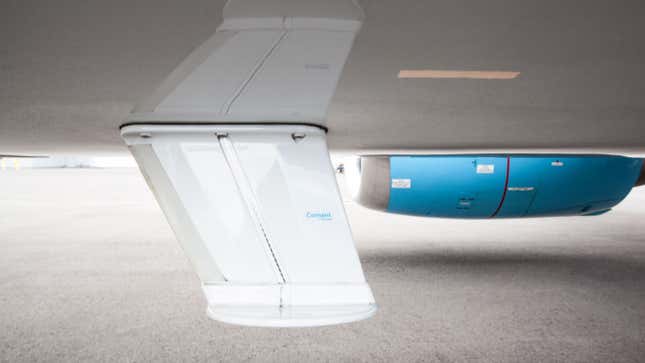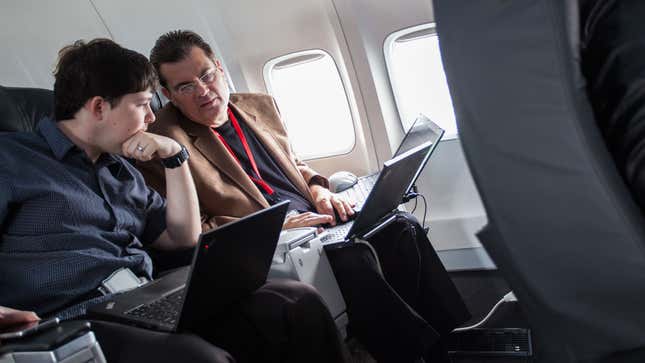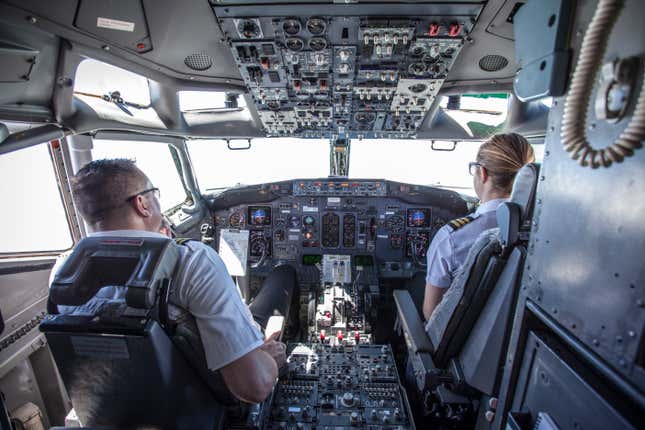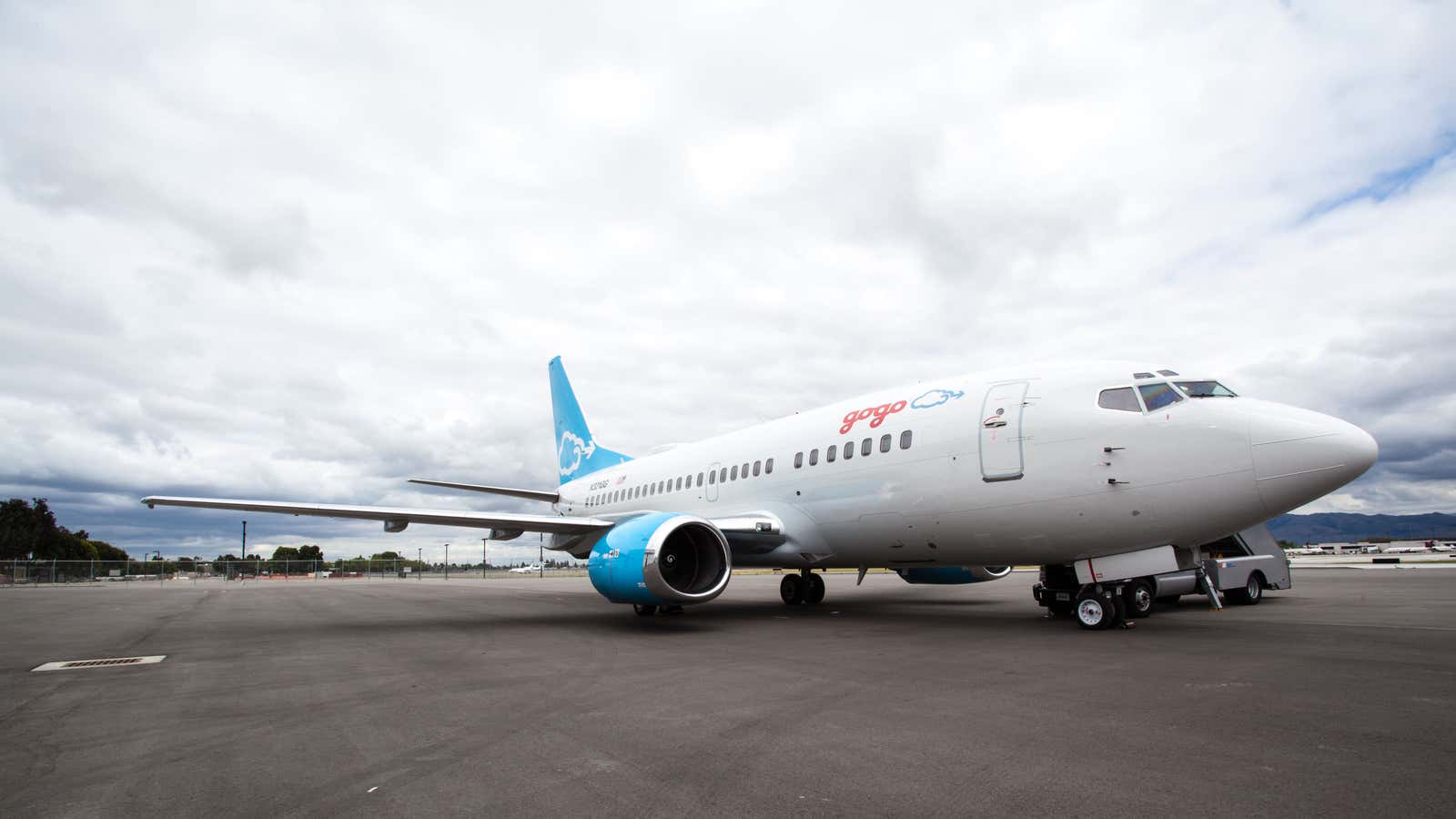I’m writing this from 23,000 feet in the air, having just finished a FaceTime call with a colleague, and am now streaming BBC World News.
Remarkably, this all actually works. In my limited experience with in-flight wifi, it’s either slow to a crawl or just plain nonfunctional. For this reason, I don’t even try to get work done on a plane, preferring to use the time to read or sleep.
“Anyone familiar with Gogo today knows our ground network is at capacity,” Blane Boynton, Gogo’s vice president of product, tells me on a 737 shortly after we take off from San Jose International Airport. “Certainly, there are folks who hate Gogo. They hate [paying] the $40 from San Francisco to JFK.”

Our flight’s not going anywhere today. We took off at around 12:30pm and will be back in San Jose within an hour. The purpose of our trip to nowhere is to demonstrate Gogo’s new 2Ku technology, which aims to provide internet speeds comparable to what’s available on the ground.
Just this morning, Gogo announced that International Airlines Group—parent of British Airways, Iberia, Vueling, and Aer Lingus—will equip 137 long-haul aircrafts with 2Ku, and Aeromexico is already operating five planes (58 in total) with its faster wifi.

The leader in airplane wifi by market share, Gogo has largely relied on air-to-ground connections that get about 10Mbps, which is comparable to 4G—but keep in mind that’s shared among all passengers on a plane. That has added up to frustration for travelers staring at screens with never-ending loading icons.
Our plane today is a refurbished 737 with a new type of antenna array consisting of rotating discs that are purportedly better at locating satellites, especially when crossing the equator where the signal can get noisy. The flat shape is better for plane drag and fuel burn, and the wider surface area promises more capacity. Our plane is getting about 25Mbps—shared among all of us (the journalists, airline folks, and Gogo reps made up only a fraction of the seats)—but the technology promises speeds of up to 70Mbps when Gogo deploys its second-generation modem.

Throughout my flight, I was getting about 7Mbps to 12Mbps, which is nothing to brag about when you’re on the ground but it’s functional. “It’s choppy,” my colleague Mike Murphy tells me when I video call him from the air, “but it definitely works.”
As for the price of this faster in-flight wifi, that will largely be determined by the airlines themselves. International Airlines Group hasn’t announce its rates, and Aeromexico has yet to charge for 2Ku access due to regulations in Mexico.
Gogo has been known to increase prices even as service has slowed, since many of its customers’ employers foot the bill. But Boynton believes more capacity should lead to lower prices and, ultimately, wider adoption.

“Think about cellular data when that first came out,” he says. “It’s a fortune and now we see the price per megabyte coming out. As price comes down, we think it’ll appeal to more travelers.”
Though the technology is live already, it will, however, be a while before we see wider deployment of 2Ku. That’s largely due to regulatory issues, which vary from country to country. In the US, the Federal Aviation Administration requires Gogo to certify the equipment on each unique aircraft configuration. So instead of just getting approval for a Boeing 737, for example, Gogo needs to get it for 737-800s (which American Airlines uses), 737-900s (Delta), 737-300s (Southwest), and so on. “In the eyes of the regulators, these are all different planes,” Boynton says. The company currently has clearance for the 700 and 800 configuration for the 737.
During Gogo’s most recent earnings call on Feb. 25, CEO Michael Small said the plan is to get 75 planes flying with 2Ku and four times that in 2017.
